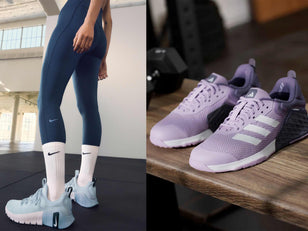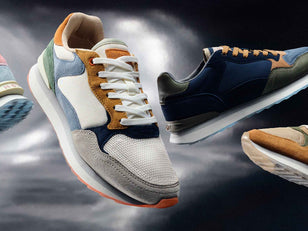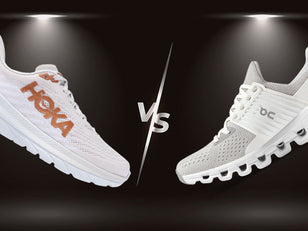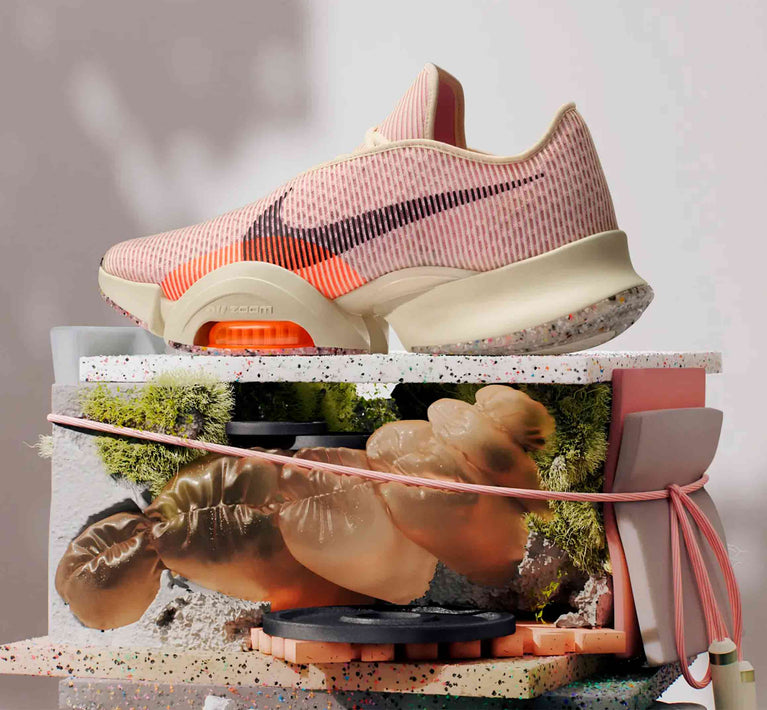
Shoe Reviews
Sale
Shop the SaleNew Brand Drops
All New inFeatured
All BrandsFeatured
All ShoesTrending
All Articles
Shoe Reviews
How to Find the Best Gym Shoes: The Complete Guide

Buying Guides
Alo Yoga Leggings: The Complete Guide and Review

Wellbeing
What to Know about Exercise on Phases of Your Menstrual Cycle

Shoe Reviews
Everything You Need to Know About HOFF Trainers

Running
How to Stay Safe Running in the Dark

Shoe Reviews
On Running Shoes vs HOKA Shoes
Earn points towards free products, discounts & more
Not a member?
Find out moreYour cart is empty


SUSTAINABILITY RATING: 3/5
Nike has been on a 25-year journey to transform its business, firstly embracing transparency in its supply chain and labour practices, and then more sustainable materials and manufacturing. In 2019 it launched ‘Move to Zero’, a comprehensive sustainability plan aimed at a 30% reduction in carbon emissions by 2030. Nike has come a long way from the scandals of the late 90s, is on track to become a recognised leader in this field, and is making significant investments in innovations for the sake of sustainability. Nike publishes an annual Impact Report with enormous amounts of data on this.

Sustainable Materials
25 years ago it launched Nike Grind with the aim of creating a zero-waste future and a healthier planet. Sustainable material use has accelerated in recent years, and Move to Zero will see 1 billion PET plastics bottles a year diverted from landfills and waterways to be transformed into recycled polyester for Nike apparel and footwear. In 2020, Nike used 59% sustainable materials in apparel and 29% in footwear. It is making good progress in apparel, up from 19% in 2015, but more progress is necessary in footwear. 100% of cotton is sourced sustainably. Nike does not have a formal animal welfare policy that runs throughout its supply chain. However, it does not use exotic animal skin or fur within its products. It does use other materials, including leather, wool, and down. It is unclear whether Nike traces any of these animal-based products to the first stage of its production, which could be improved.

Labour Welfare
With a 57% rating on the Fashion Revolution Transparency Index (adidas is 69%, UA 29%) Nike ranks 16th and has clearly made good progress towards fairer working practices. Parts of the brand’s current supply chain is certified by the FLA Workplace Code of Conduct. It also publishes an in-depth list of suppliers at the end of production, enhancing transparency. While Nike publishes some information about gender equality, forced labour and freedom of association, there could be more detail. It is also unclear whether the brand ensures a living wage throughout its supply chain. However, Nike says that 90% of its footwear and apparel is made by factory groups that it has worked with for more than 15 years, giving it good control over labour welfare standards. Nike also has some additional training to benefit workers, which include Worker Engagement, Culture of Safety, and Environmental Minimum Programs.

Manufacturing
Currently, we can’t see any evidence that Nike is actively trying to prevent deforestation in the supply chain and it has not publicly announced any policies that will help combat this growing environmental issue. Nike has partnered with EFM to offset carbon emissions created through shipping products. The brand has set out goals of reducing Scope 1 and 2 emissions by 65% and Scope 3 emissions by 30% by 2030. The company has tracking in place for its water footprint across over 800 vendors, with a range of water reduction initiatives.
*Excludes sale. Plus get exclusive access to new drops, sales & more!